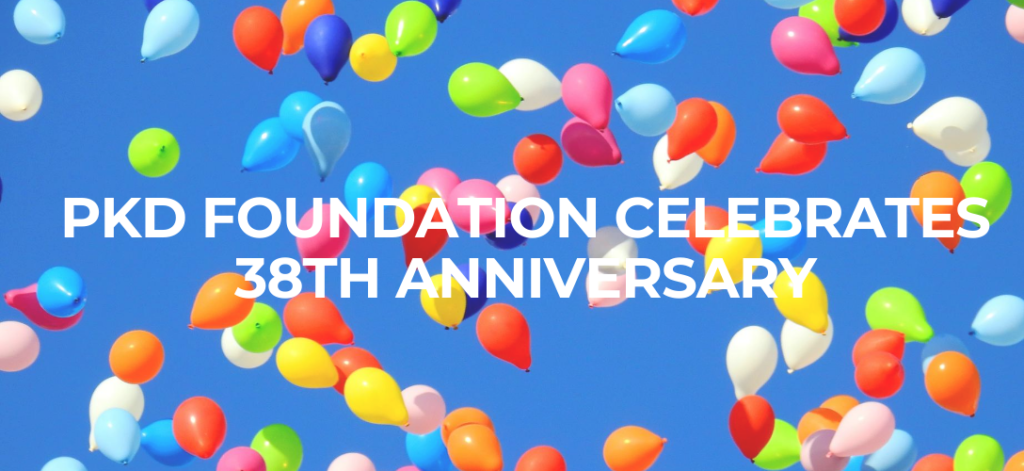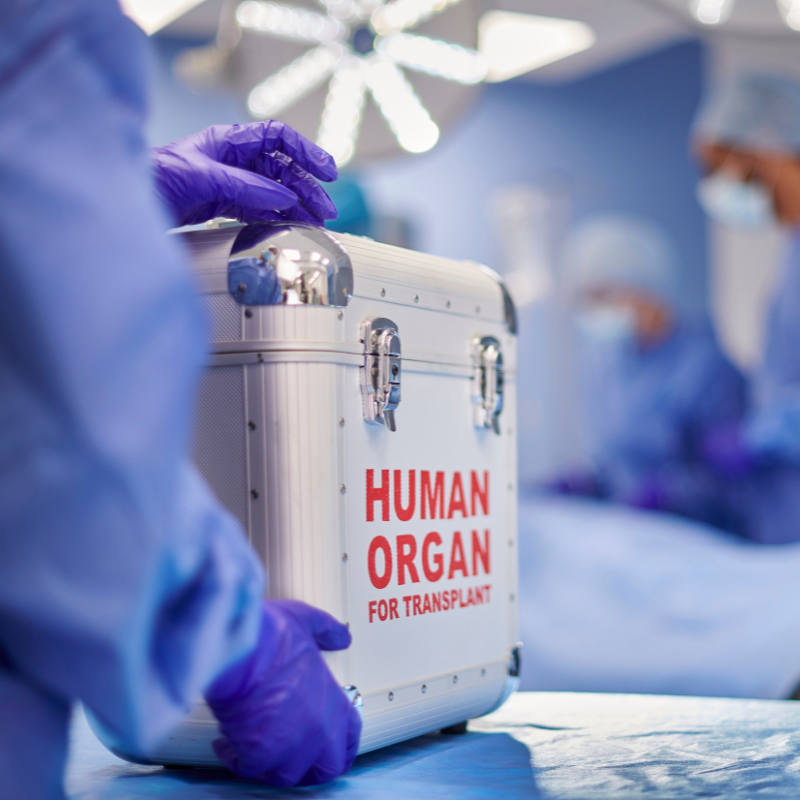
Published August 18, 2020 | On August 20, 1982, Jared J. Grantham, M.D., and Joseph H. Bruening founded the PKD Foundation to find treatments and a cure for polycystic kidney disease (PKD). This original vision remains at the heart of the Foundation’s work today. As we celebrate our 38th anniversary this week, we take a look back at what we’ve accomplished over the years.
The PKD Foundation: 1980s
At the time of our founding, little was known about PKD. The genes hadn’t been identified, and only a small number of researchers were working in PKD science. However, just three years later the chromosomal location of a human ADPKD gene was discovered. Understanding the disease took a major leap forward.
During our first decade of operation, the Foundation brought many firsts for the PKD community. The Foundation awarded our first PKD research grant. The first local PKD Chapter formed in Chicago. In 1989, the inaugural PKD National Convention educated patients and health care professionals about PKD in Kansas City.
The PKD Foundation: 1990s
What came next? Identifying the specific genes affected by PKD came in the 1990s. The PKD1 gene (responsible for 85% of ADPKD cases) and the PKD2 gene (responsible for 15% of ADPKD cases) were discovered. Polycystin 1 & 2, protein products of PKD genes, were also identified. Along with genetic markers, important factors affecting the progression of cystic disease were found in a large number of patients.
You might be wondering, what did PKD advocacy look like at a federal level? In 1993, the National Institutes of Health (NIH) made a major federal investment in PKD research—$5.73 million. Beyond funding, the NIH established PKD Centers of Excellence at four research institutions.
From vital research achievements to growing national PKD awareness, the 1990s wrapped up with the launch of the Foundation’s website.
The PKD Foundation: 2000s
When it comes to patients and families, fostering a sense of community is a priority for the Foundation. And the Walk for PKD is the biggest way for the community to connect. At the inaugural event in 2000, 900 PKD patients, families, and friends raised $214,000. By 2006, the U.S. Senate passed the first-ever National PKD Awareness Week Resolution to help promote the Walk for PKD.
After the genes for ADPKD (previously identified) and ARPKD (identified in 2002) were discovered, finding treatments was the next step. The desire for PKD treatments ushered in the start of multiple clinical trials over a five-year period. These trials studied imaging techniques, blood pressure control, and the effectiveness of the drug tolvaptan. Though this was just the beginning, findings from these trials would reap substantial wins for PKD patients down the line.
Beyond the Walk for PKD and clinical trials, national initiatives saw progress. The first PKD Foundation United on the Hill event was hosted to push for more federal funding for PKD research and to pass the Genetic Information Nondiscrimination Act (GINA). After a 13-year fight, GINA was passed by Congress and signed into law.
The PKD Foundation: 2010s
As we entered our third decade of operation, clinical trials from previous years wrapped up and it came time to analyze the data. In 2010, the PKDOC (PKD Outcomes Consortium) was formed to support using total kidney volume (TKV) as an endpoint for human clinical trials. In 2012, results from the TEMPO 3:4 clinical trial were presented. Even bigger findings came the next year as results from the tolvaptan drug trial were reviewed.
In 2013, the early success of tolvaptan led to a priority review by the FDA. REPRISE, a phase 3b study of tolvaptan for adult patients with ADPKD by Otsuka, began enrollment in 2014. That same year tolvaptan was approved in Japan as a treatment for ADPKD. By 2015, the drug would be approved as a treatment in Canada. Finally, in 2018, additional research found tolvaptan reduced the rate of decline of kidney function by 35% over a 12-month period in ADPKD patients and the FDA approved the drug.
Along with the milestones in treatment, funding for PKD research grants increased. Five two-year PKD research fellowships were awarded by PKDF to rising star clinicians and scientists for a total investment of $500,000 in 2015. The Jared J. Grantham Research Fellowship is established with the American Society of Nephrologists (ASN) to support PKD-related research in perpetuity. The ASN then matched the Foundation’s $500,000 investment by $1.5 million. One year later, 15 two-year research grants were awarded by the Foundation—a $2.4 million investment.
On PKD Awareness Day last year, we launched the first nationwide database of patients with ADPKD. With over 1,700 participants to date, the ADPKD Registry will be instrumental in advancing PKD research. It collects information in a standardized and anonymous format, telling us about the patient journey, unmet medical needs, and patient preferences, while revealing more about the disease burden on the lives of ADPKD patients and their families.
The PKD Foundation: Today
From not knowing the genes to having a drug on the market, PKD research and resources have seen incredible growth over the years. Today, patients and families can access educational resources, enable better research through participation in the ADPKD Registry, and benefit from the $1.5 million awarded to research grants and fellowships in 2020.
Despite the changes and challenges the world is facing, the work of the Foundation continues. “Even during these unprecedented times, we’ve committed to putting an extra $1.5 million toward PKD research, because we see the importance of not taking our foot off the gas as we continue to make strides toward a cure for PKD,” President and CEO Andy Betts explained in the July issue of PKD Life.
Just as it was in 1982, the PKD Foundation remains driven by our vision to #endPKD and our mission to give hope.
The PKD Foundation is the largest private funder of PKD research in the U.S. Since 1982, we’ve invested over $50 million in more than 1,300 research, clinical and scientific grants, fellowships, and scientific meetings. Each year, the Foundation identifies and supports the work of scientists and researchers from around the world who look for ways to treat and eventually cure PKD. Our vision is to #endPKD. However, donations are necessary to fund research that leads to more effective treatments and ultimately a cure for PKD.









Thank you PKD! I first found out about this organization in1985 about the time my husband was diagnosed. 35 years later, I lost my husband in 1991 after 6 years on peratineal dialysis. In 1999 both my sons were also diagnosed. One was killed in an accident before failure the other one had a living donor transplant in 2015. It was a huge success. I was the donor at age 66.